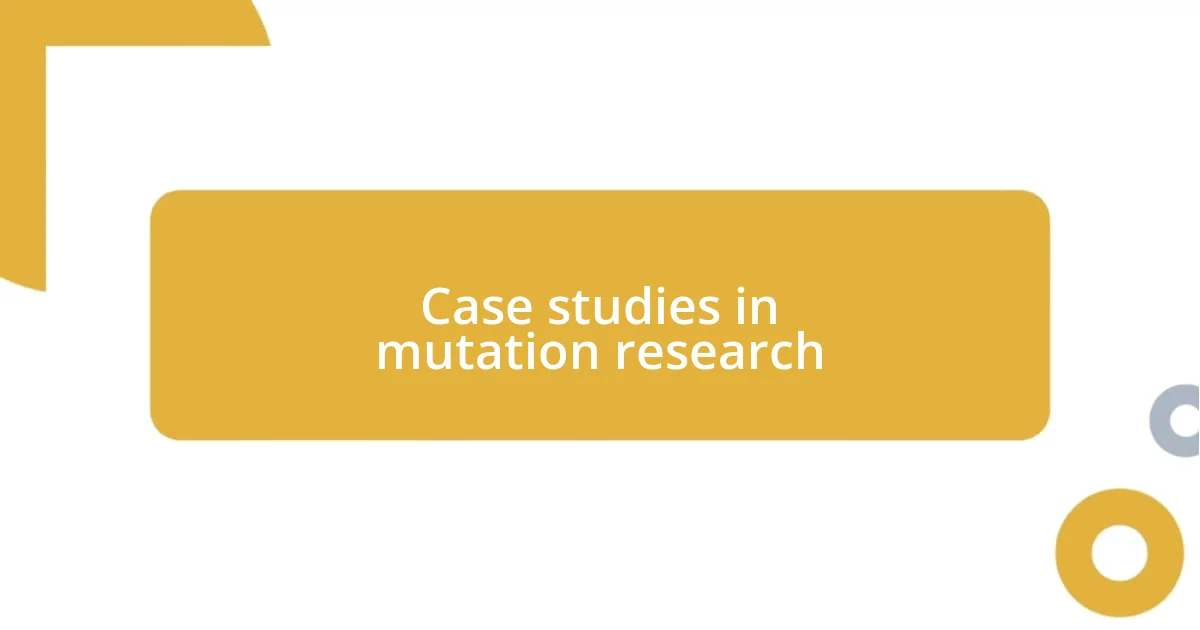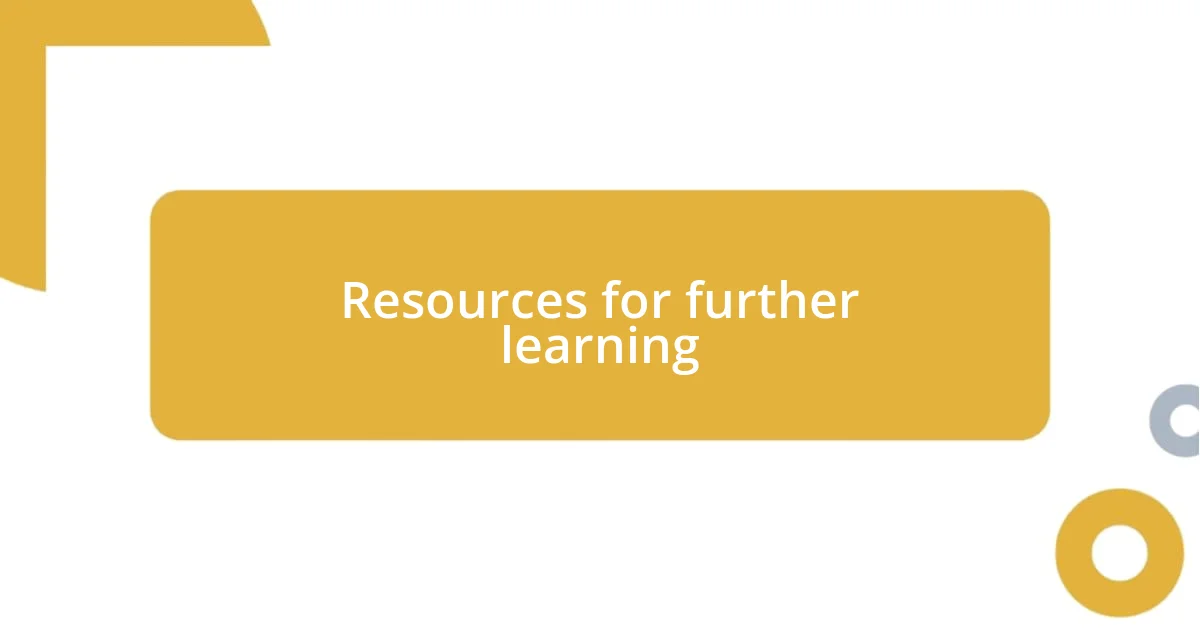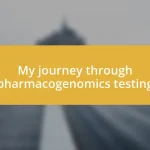Key takeaways:
- Mutations significantly impact organisms, leading to both genetic disorders and evolutionary adaptations, highlighting their complexity and importance in health and biodiversity.
- Practical applications of mutations are seen in agriculture (pest-resistant crops), medicine (gene therapy), and evolutionary biology, indicating their versatile roles in improving quality of life and understanding species adaptation.
- Emerging trends such as AI in mutation analysis and collaboration between genomics and environmental data are set to transform disease detection and prevention, emphasizing the need for public engagement and ethical discussions in mutation research.

Understanding mutation concepts
Understanding mutation concepts involves grasping the changes in DNA that can lead to variations in organisms. When I first delved into this topic, I was struck by how mutation isn’t just a scientific term; it feels like a dramatic storyline unfolding in real life. I remember feeling both fascinated and overwhelmed by how these alterations can lead to everything from new species to genetic disorders. Isn’t it incredible to think that a single change in the DNA sequence can have such profound consequences?
As I navigated through various types of mutations—such as point mutations, deletions, and insertions—I began to appreciate their complexity. Each type has its own implications, and I often wondered, how could something so tiny have such huge effects? This realization prompted me to explore case studies, like those of sickle cell anemia, which is caused by just one nucleotide change. It’s mind-blowing how a single mistake in the genetic code can alter the structure of hemoglobin and affect so many lives.
Through my journey, I’ve learned about the environmental factors that can influence mutations, like radiation or chemical exposure. It hit home when I read about how certain lifestyles can increase mutation rates—suddenly, it felt personal. Imagining how our choices could ripple into our DNA made me more aware of my own habits and their potential impact on health, both for myself and future generations. Have you ever thought about how much control we truly have over our genetic future?

Practical applications of mutations
Learning how mutations can be practically applied in various fields has been quite illuminating for me. In agriculture, for instance, I’ve seen how scientists use induced mutations to create crops that are more resistant to pests and diseases. I find it remarkable how these modifications can lead to increased yield and better nutrition—for example, the development of disease-resistant rice varieties that not only feed more people but also require fewer chemical inputs.
Another fascinating application is in medicine, particularly with gene therapy. I recall a story about a close friend who struggled with a hereditary condition, and hearing about how researchers are now looking at mutations to repair faulty genes just blew my mind. This approach offers hope for many, as it targets the root cause of genetic disorders instead of just managing symptoms. Isn’t it inspiring to think that a better understanding of mutations can potentially cure diseases that once seemed insurmountable?
Finally, I find the role of mutations in evolutionary biology truly captivating. When I read about how mutations can lead to new traits that drive species adaptation, it feels like nature’s own magic show. For example, the peppered moth’s color change during the Industrial Revolution is a classic case where environmental pressures made certain mutations advantageous. How amazing it is to witness the intricate dance of life evolve right before our eyes!
| Field | Application |
|---|---|
| Agriculture | Development of pest-resistant crops through induced mutations. |
| Medicine | Gene therapy targeting genetic disorders by repairing faulty genes. |
| Evolutionary Biology | Understanding species adaptation via beneficial mutations. |

Tools for studying mutations
Studying mutations requires the use of specialized tools that can help us unravel the complexities of genetic changes. In my experience, relying on a combination of laboratory techniques and computational software has proven invaluable. For instance, I vividly remember my first hands-on experience with CRISPR technology. It was thrilling to see how this gene-editing tool could precisely target and modify specific sequences in DNA, transforming my theoretical knowledge into practical applications.
Here are some essential tools I’ve found particularly useful in studying mutations:
- CRISPR-Cas9: A revolutionary gene-editing tool that allows for targeted modifications in DNA.
- Sequencing Technologies: Next-Generation Sequencing (NGS) provides detailed insights into genetic variations.
- Bioinformatics Software: Programs like BLAST help in comparing DNA sequences and identifying mutations.
- PCR (Polymerase Chain Reaction): A crucial technique for amplifying specific DNA segments for analysis.
- Genetic Mapping Tools: These assist in linking mutations to specific phenotypes or traits.
The universe of mutations opens up even further with each tool I explore. I remember a moment in a lab session when we amplified a gene segment that carried a mutation linked to lactose intolerance. The excitement of seeing our results was palpable! It genuinely reinforced my understanding of how these tools can lead to discoveries that affect our health and understanding of human genetics. Embracing technology in mutation studies has not only deepened my knowledge but has also made every new experiment feel like embarking on an adventure into the unknown.

Case studies in mutation research
One case study that really stood out to me involved researchers investigating the mutations responsible for antibiotic resistance in bacteria. I remember feeling a mix of urgency and intrigue when I learned that by tracing the mutations leading to resistance, scientists could develop new antibiotics that specifically target these altered bacteria. Isn’t it incredible how understanding these mutations can not only solve immediate health issues but also inform our future approaches to medicine?
Another fascinating example is in the field of cancer research. A study on specific mutations in tumor cells revealed pathways that could be targeted with new therapies—this was a game changer! I recall discussing this breakthrough with a group of peers, and we all felt a sense of hope. The possibility that a deeper understanding of cancer mutations could lead to tailored treatments made the conversation so much more passionate and personal. How meaningful it is to know that molecular changes in our bodies could one day lead to individualized cancer therapies that improve survival rates!
I also find the research around the mutation rates of viruses, like in the case of the influenza virus, particularly compelling. The rapid evolution of the virus through small mutations can alter its ability to evade the immune system. I distinctly remember seeing the frustration and anticipation in a lab when the findings on viral mutations came through during flu season. The ongoing efforts to adapt vaccines based on these mutations left us pondering—how well can we really keep up with such a dynamic adversary? It’s a vivid reminder of the constant battle between science and nature, one that keeps me ever-curious about what future discoveries will reveal.

Overcoming challenges in mutation analysis
Analyzing mutations is often riddled with challenges, and I can personally attest to the frustrations that can arise from inconsistent data. I recall a particularly daunting phase during a project where we were analyzing gene sequences. The unexpected discrepancies in results left me feeling puzzled. It was in that moment I learned the importance of meticulous calibration of instruments and standards in experiments. Ensuring accuracy can truly make the difference between a breakthrough and a dead end.
Moreover, interpreting complex mutation data can feel like solving a puzzle in the dark. I remember grappling with sequence alignments and trying to untangle variations that seemed trivial but were actually significant. Engaging with my peers made all the difference; we shared insights and methodologies that illuminated previously obscured connections. This collaborative approach not only eased the burden but also sparked new ideas. How often do we overlook the power of teamwork in overcoming scientific hurdles? It’s a lesson I carry with me into every analysis.
Finally, one of the biggest challenges I faced was the sheer volume of information available. With an ever-growing repository of mutation data, I often felt overwhelmed by the options. I distinctly recall my frustration when sifting through countless studies and papers, searching for the most relevant insights. However, I learned to hone in on specific research questions and utilize effective filtering strategies. In doing so, I discovered that focusing my search not only clarified my understanding but also fueled my curiosity. How liberating it is to navigate through complexity with purpose!

Future trends in mutation understanding
One emerging trend that has captivated my attention is the use of artificial intelligence in mutation analysis. I recently encountered a fascinating report detailing how AI algorithms can sift through vast amounts of genomic data to identify mutations faster and with greater accuracy than traditional methods. Imagine how revolutionary this could be for early detection of diseases! With AI enhancing our ability to pinpoint critical mutations, I can’t help but wonder—will this lead to quicker development of targeted therapies that can change lives?
Another fascinating aspect on the horizon involves collaboration between genomics and real-time data. During a recent workshop, I was excited to learn about projects that combine genetic data with environmental factors to understand mutations’ roles in disease progression. This integrative approach has the potential to create a more holistic view of mutation effects. It makes me think, could we ultimately develop preventive measures against diseases based on individual genetic predispositions and lifestyle choices?
Lastly, I’ve noticed a growing focus on public engagement in mutation research. Being part of community forums discussing genetic advancements has opened my eyes to how vital it is to make this information accessible. Being able to share insights with curious minds not only empowers individuals but also promotes informed discussions around ethical implications. Isn’t it essential that our understanding of mutations becomes a two-way street? This interactive exchange will undoubtedly shape the future narrative of mutation research.

Resources for further learning
When diving into the realm of mutation analysis, I’ve found that foundational knowledge is crucial. A go-to resource for me has been “Molecular Biology of the Cell” by Alberts et al. It’s dense, but the clarity in explaining complex concepts helped me immensely when I was struggling to connect the dots during my early research. I often suggest this book to others, as it breaks down intricate processes and provides a solid grounding in biology—perfect for anyone wanting to deepen their understanding.
Podcasts have also become a staple in my learning routine. I remember tuning into “The Mutation Podcast” during commutes, which offered insights into recent advances in mutation research. It was like having a casual conversation with experts while I was on the go! These audio resources allow me to absorb new information effortlessly, making my learning experience both engaging and practical. Isn’t it fascinating how technology can cater to our busy lives while feeding our intellectual curiosity?
Finally, I can’t stress enough the value of online forums and communities. Platforms like ResearchGate have connected me with other researchers grappling with similar challenges. It’s refreshing to exchange ideas, seek advice, and even find collaborators. I distinctly recall a discussion where someone shared an innovative method for data analysis that changed my whole approach. How empowering it is to find a support network that not only motivates but also enriches our learning journey!














